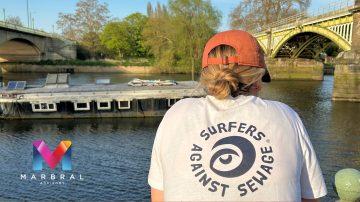Will your business be decarbonisation-ready for 2030 and beyond?
Marbral Advisory’s Change Architect, Charlotte Boyle, explains some practical steps you can take right now.
Climate breakdown represents profound risk to our stability of life.
As such, everyone has a part to play in the stewardship of our planet, including organisations. Nevertheless, tackling something so big, so complex, can feel overwhelming. And that’s before we get to the terminology and acronyms.
If this is your organisation, you are not alone; many are struggling with the scale of strategic planning required. Indeed, a 2022 FT article notes that 75% of UK office space currently lags on upcoming minimum energy efficiency standards for 2030, representing a serious commercial risk, along with a rapidly shortening window to rectify the situation.
As such, the question becomes, where to start?
The Goal: Where Do We Want To Be?
Firstly, we need to establish scope. Broadly speaking, according to the Greenhouse Gas Protocol, greenhouse gas emissions can be classified under three different scopes:
 As each organisation’s scope 1 and 2 emissions represent another organisation or individual’s scope 3 emissions, tackling these first two areas offers a strong starting point, and is typically the focus of organisational core targets.
As each organisation’s scope 1 and 2 emissions represent another organisation or individual’s scope 3 emissions, tackling these first two areas offers a strong starting point, and is typically the focus of organisational core targets.
For most organisations, this equates to emissions reductions across the following, as applicable:
- Buildings’ energy consumption (heating, cooling and general electric)
- Fleet energy consumption (fuel or electric)
Identifying a Target and Timeframe
In line with the Paris Agreement, Jersey’s Carbon Neutral Roadmap, published in April 2022, sets out the scope 1 and 2 emissions targets for the Island, as compared to 1990 emissions levels. This includes:
- A 68% drop by 2030
- A 78% drop by 2035
- Net zero by 2050
Therefore, it makes sense for Island organisations to align with this established trajectory.
The Baseline: Where Are We Now?
To calculate an organisational percentage drop, we first need our annual organisational emissions baseline. And to calculate our baseline, we need to know our energy consumption.
Annual Energy Consumption:
Calculating this requires a stocktake of all energy consumed by organisational assets (buildings and fleet) within a given year, usually via utility bills and fuel expenditure.
This allows us to obtain a total for each energy type, e.g. mains electricity, gas, heating oil, petrol and diesel, in their respective units, typically kWh or litres.
Annual Energy Emissions:
To calculate emissions, the energy consumption total is multiplied by the relevant emissions factor for that energy type, unit and (crucially!) year in which that energy was consumed.
Different jurisdictions have different emission factors for the same energy types, due to variations in production, and Jersey’s are available via the Government of Jersey website.
Averaging Baseline Consumption:
For most organisations, 1990 energy data will not be available, and a substitute baseline is required. When deciding on this, it can be useful to average consumption results from several years.
This has the benefit of smoothing out lingering impacts from Covid disruption, as well as bulk purchase of fuel and seasonal fluctuations. Temperature variations, such as unusually cold or warm periods, can have a substantial effect on heating or cooling consumption, which may skew the baseline where a single year’s worth of data is used.
Bridging the Gap
Once an organisational baseline has been calculated, the corresponding 2030 (68%), 2035 (78%) and 2050 (net zero) targets can then be calculated, along with yearly step-down targets to enable decision makers to track progress and aid course correction.
Options for reducing emissions from operations and service delivery are many and varied, but typically fall into two areas of intervention:
- reducing energy wastage by existing assets (increasing energy efficiency)
- e.g. insulation, glazing improvements, solar shading
- swapping asset energy sources to greener options
- e.g. biofuels or electrification
Then it’s on to business case preparation. Interrogating property and fleet data to better understand the age, make-up, utilisation of assets, along with modelling the potential impact of different interventions, so we can all progress towards a safer planet.
 Marbral Advisory delivers change and project management, and advisory and training services, to businesses going through change. If you need help with your sustainability planning, policies, processes, programmes, or projects, then please email to get in touch today.
Marbral Advisory delivers change and project management, and advisory and training services, to businesses going through change. If you need help with your sustainability planning, policies, processes, programmes, or projects, then please email to get in touch today.
Marbral Advisory also offers ‘An Introduction to Sustainability for Your Business’ 30 minute e-learning course, packed full of interactive content to help individuals and teams understand what sustainability really means.














